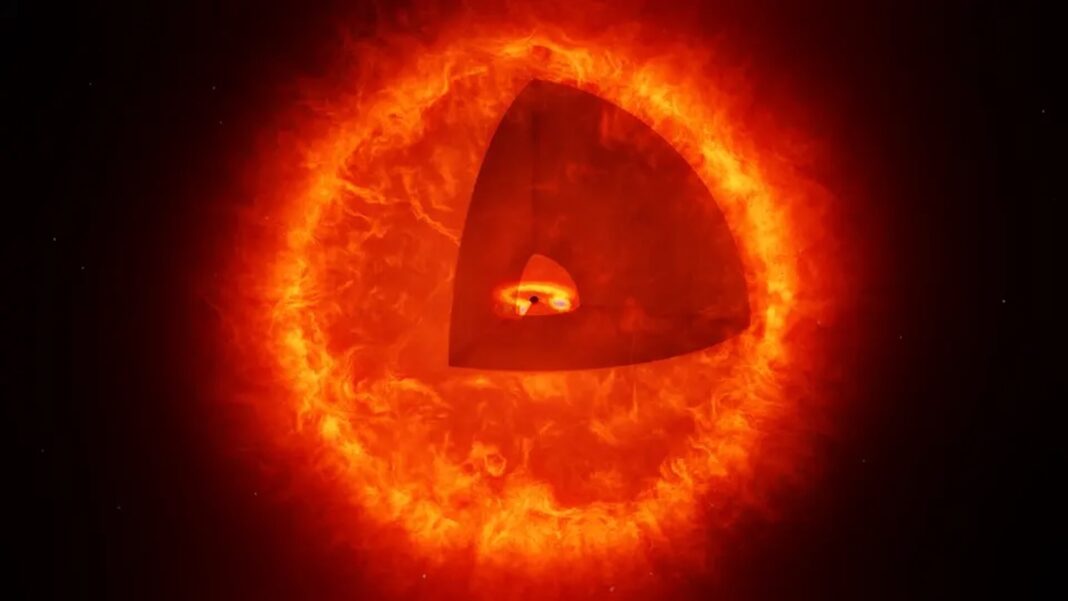
Astronomers may have finally found a clue to explain the strange “little red dots” that the James Webb Space Telescope spotted in 2022. The newly discovered object, nicknamed the Cliff, hints that these dots could be something entirely new in the universe — “a black hole star.” This happens when a black hole feeds so quickly that the gas around it lights up, making it look like a glowing star.
Before this, scientists thought the red dots might be huge early galaxies or supermassive black holes actively consuming matter.
Scientists are still debating what the mysterious “little red dots” really are. They might be exotic new objects, or perhaps just a stage in how galaxies and black holes grow. When the James Webb Space Telescope first spotted them in 2022, researchers even nicknamed them “universe breakers” because they looked too old to exist so early in cosmic history.
To explain them, astronomers have put forward two main ideas. One is that these dots are incredibly compact galaxies, packed with stars forming at an unusually fast rate. If true, they would represent a brand-new kind of dense galaxy shaped by processes we’ve never seen before.
The other idea is that the dots are powered by huge black holes sitting at their centers. In this case, the redness would come from thick clouds of dust surrounding the black hole. These galaxies would act like active galactic nuclei (AGN) — galaxies lit up by a feeding black hole. But unlike quasars, which are also black hole–powered and shine brightly without dust hiding them, these dusty AGNs would be much harder to spot.
At the moment, scientists don’t know how — or if — these two types of objects are connected. The mystery remains open.
Similar to Single Stars!
With this unmissable, unusual feature, The Cliff looked like it did not fit any of the interpretations that had been proposed for little red dots. But lead scientist De Graaff and her colleagues wanted to make sure. They constructed diverse variations of all the models that tried to cast little red dots either as massive star-forming galaxies or as dust-shrouded active galactic nuclei, attempted to reproduce the spectrum of The Cliff with each one, and failed every single time.
On this basis, de Graaff and her team of scientists developed a model, giving it the name “black hole star,” written as BH*: An active galactic nucleus, that is, a supermassive black hole with an accretion disk, but surrounded and reddened not by dust, but by virtue of being embedded in a thick envelope of hydrogen gas. The BH* is not a star in the strict sense, since there is no nuclear fusion reactor in its center.
In addition, the gas in the envelope is swirling much more violently (there is much stronger turbulence) than in any ordinary stellar atmosphere. But the basic physics is similar: The active galactic nucleus heats the surrounding gas envelope, just like the nuclear-fusion-driven center of a star heats the star’s outer layers, so the external appearance has marked similarities.
References:
https://www.mpg.de/25316826/black-hole-stars
Similar Articles: Gaia BH3: The Colossal Black Hole Next Door

